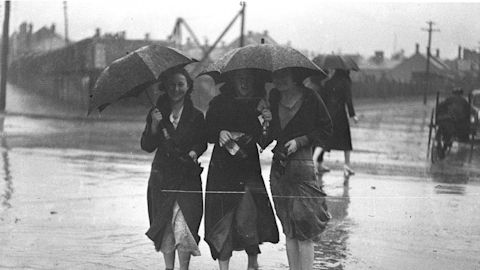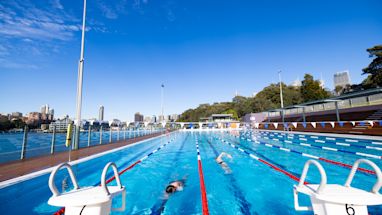Transforming Sydney’s oldest industrial heartland into a modern town centre has tackled many challenges. The most complex and critical of them has been flooding.
The video below takes a look behind the challenge.
Embedded content: https://youtu.be/96vb2tspcYU
Floodwaters reached over 2m in Joynton Avenue
Green Square sits on a floodplain that used to be a network of wetlands and creeks. Intensive urbanisation has increased paved areas in the precinct, drastically reducing natural drainage for stormwater.
Flash-flooding from heavy rainfall was a constant and dangerous threat. During storms in April 2015, floodwaters reached 2.3m in Joynton Avenue.
Green Square couldn’t be redeveloped without addressing this major flood risk.

Building below while city life continued above
After researching multiple options, the City of Sydney and Sydney Water decided to construct a 2.4km underground drain from Epsom Road in Zetland to Alexandra Canal, through the new Green Square town centre.
But of course, building a giant underground drain while city life continued above ground was no simple task.
The construction challenge that lied beneath
Adding to the project’s complexity, the new drain had to work with the existing drainage system that included an underground route full of industrial debris and steel junk.
To tackle this engineering challenge and minimise the impact on the community, the City of Sydney and Sydney Water formed the Drying Green Alliance. The alliance includes local and state government, construction contractors and designers.

Why the Green Square stormwater drain is a big deal
Micro-tunnelling was used to install huge 1.8m diameter pipes laid at incredible depths up to 12m underground. Like key-hole surgery for the construction world, micro-tunnelling drastically reduces disruption to existing infrastructure and life above ground.
Complex computer and physical modelling was used to navigate over 1,500 pipes and pits to ensure the system worked.
The new drain also diverts stormwater to a new recycled water treatment plant. This plant delivers up to 320 million litres of recycled stormwater each year to new buildings and open spaces in the town centre.

When a once-in-a-100-year storm hits
In November 2018, a massive storm hit Sydney. Water flowed from the drain into the newly widened channel on its way to Alexandra Canal.
And Joynton Avenue didn’t flood.
Proving that the Green Square stormwater drain worked as planned.
An incredible feat of collaboration, innovation and urban infrastructure.
Main image: People crossing a flooded street at Alexandria, 1934. Credit: Sam Hood (State Library of NSW, Home and Away - 412).
Published 8 November 2019, updated 17 October 2023



